Creating a Ptolemaic wargames army to defend Alexandria with
Ptolemaic Egypt, the last Hellenistic kingdom, was only a shadow of its former self when it faced off against the Romans in the streets of Alexandria.
Nevertheless it makes a varied and colourful force for a wargamer.
The royal army musters before marching on Alexandria.
Ptolemy I Soter had been a companion to Alexander the Great and in the aftermath of Alexander's death he managed to carve out a powerful kingdom for himself in Egypt. Ptolemy laid the foundation for the Ptolemaic dynasty that would rule Egypt, and large areas beyond it, for 275 years. During this time the Ptolemies were in almost constant conflict with the other successor states.
But the Ptolemaic armies that had conquered Babylonia in 246 and triumphed at Raphia in 217 were long gone. Internal conflict and rebellions gradually weakened the kingdom. External enemies such as the Antigonids and the Seleucids preyed upon the weak kingdom which lost more and more of its territory. The Ptolemaic kings were forced to turn to Rome for protection.
Pompey sought refuge in Egypt in 47 BC because he had helped the current ruler, Ptolemy XIIIs, father, Ptolemy XII, reclaim his throne in 55 BC. This had been done with a Roman army led by the then governor of Syria Aulus Gabinius. To protect the newly reinstated Ptolemy XII Gabinius left both legionaries and cavalry in Alexandria to act as mercenaries for the king. This force was to be known as the “Gabiniani” and must have played a central role in the siege. Caesar didn’t hold these men in high regard as can be seen in his commentaries:
“These consisted of soldiers of Gabinius who had habituated themselves to Alexandrian life and licence and had unlearnt the name and discipline of the Roman people and married wives by whom very many of them had children.”
This is obviously propaganda meant for a Roman audience, but on the other hand it is hard to evaluate how effective these soldiers would have been. Either way they kept Caesar in place for several months so they certainly could put up a fight.
For my Gabiniani I use Carthaginian veterans from Gripping Beast. They have a nice blend of hellenistic and roman gear which I think makes them suitable. These could equally well be used as thorakitai or imitation legionaries.
The Gabinian, miniatures from Gripping Beast. These are actually Carthaginians and would work perfectly well as thorakitai in a hellenistic army.
The most numerous part of the Ptolemaic Royal Army would have been made up of thureophoroi. The thureophoroi was a troop type that started to emerge during the third century BC as a complement to the phalanxes of the hellenistic states. Basically an infantryman armed with a sword, a spear and javelins, protected by a helmet and an oval shield called a thureos (hence the name). These troops were very versatile, originally intended to guard the flanks of the phalanx; they could just as easily skirmish as light troops with their javelins or form up as medium infantry with shield and spear. As the sarissa-wielding phalangites gradually played out their role they were replaced by the thureophoroi. Once again, Caesar didn’t think much of the men the ptolemies sent to fight against him:
“...men collected from among the freebooters and brigands of Syria and the province of Cilicia and the neighbouring regions; also many condemned criminals and exiles had joined them. All our own fugitive slaves had a sure place of refuge at Alexandria…”
He is probably right in where many of these men come from, a large part was almost certainly mercenaries from all over the eastern Mediterranean. I’m not certain if the kleruch system (where the state gave away land in return for military service, mainly to settlers from Macedonia and Greece) was still in effect by 47 BC. It seems more like that wealthy landowners paid for mercenaries to fulfil their military obligations.
Either way you will need quite a lot of thureophoroi for your force since in most rule systems they are not rated very high. My units are mostly made up of thureophoroi from Gripping Beast’s Polemarch-range with a few miniatures from Aventine. To be honest I’m not that fond of either of these miniatures, they are just not that great sculpts. I've seen people use all kinds of miniatures for thureophoroi, since the shield is the defining feature you can use unarmoured hoplites, peltasts or basically anything in a tunic as long as they are carrying a thureos.
Thureophoroi from Gripping Beast’s Polemarch range. Note the javelins in the shield hand, a nice detail.
As for cavalry Caesar mentions that the Ptolemaic general Achillas brought 2000 with him to Alexandria as part of the royal army. We are not provided by any more information on what type of cavalry this was by our sources. If the kleruch system was still in effect these might have been equipped with the xyston, the long lance made famous by Alexander's companions, maybe only the royal guard, the Agema, was equipped like this. It’s more likely, just like the thureophoroi, they were made up of mercenaries who fought like Tarantine cavalry with shields and javelins. There was also a Ptolemaic tradition of hiring mercenaries from the Galatian tribes of central Anatolia. But for almost twenty years the Galatians had been a client state of Rome so it’s uncertain if mercenaries were available. They would certainly make a colourful contribution to the Ptolemaic army and they could be used for many battles in the centuries before Alexandria.
My Ptolemaic cavalry is made up of a unit of kleruch cavalry from the Polemarch-range, again not the best sculpts unfortunately. They also wear padded linothorax which I don’t think there is any historical evidence for but for some reason they “feel” Ptolemaic or possibly Egyptian. I also have some Tarantine cavalry from Aventine miniatures which are great sculpts. I actually have two variants of these, one more traditional or Italo-looking and the other more Greek-looking which is perhaps more suitable. By the late hellenistic period ”Tarantine” had no geographical meaning but was rather a description of a type of light cavalry.
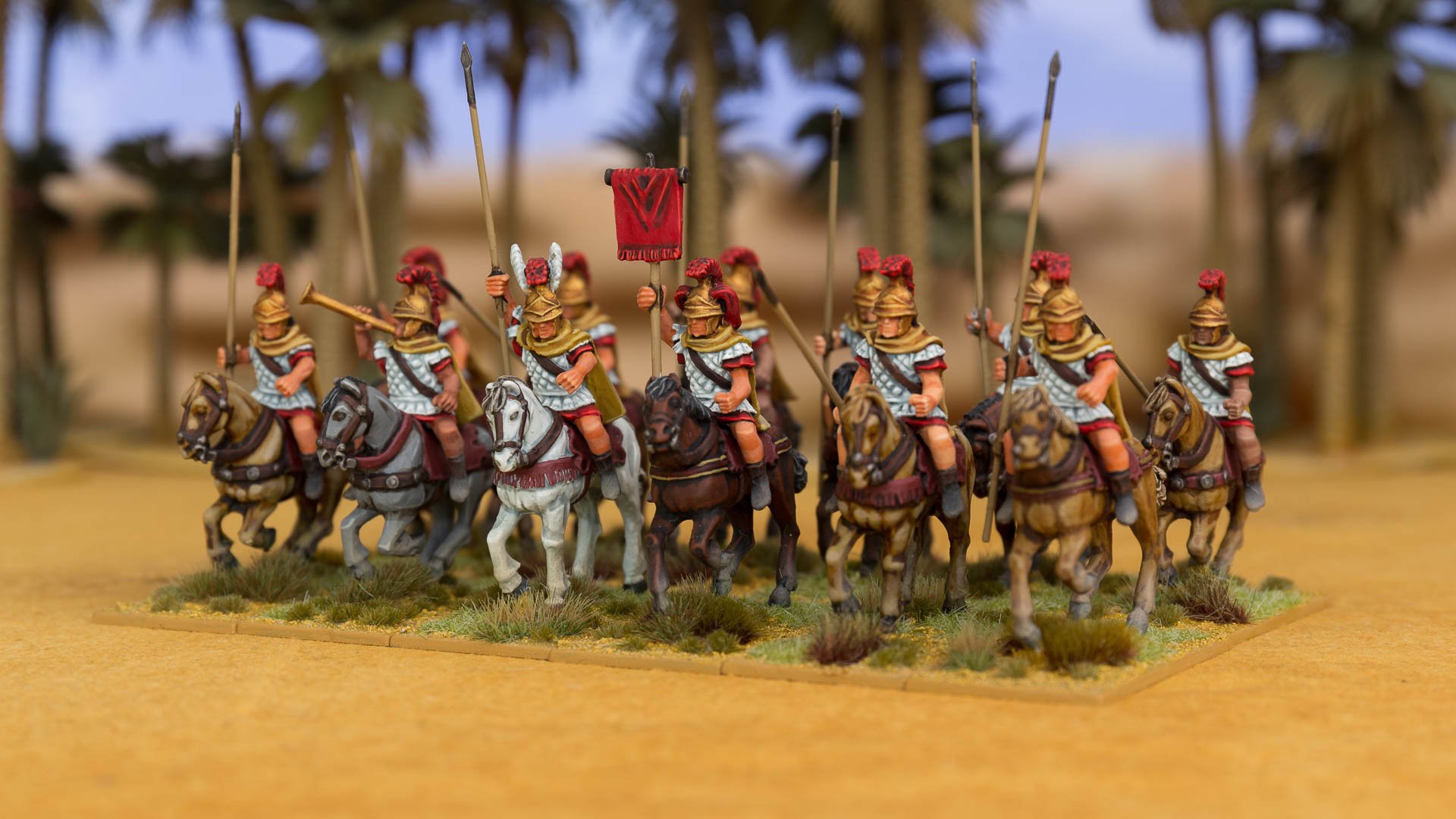
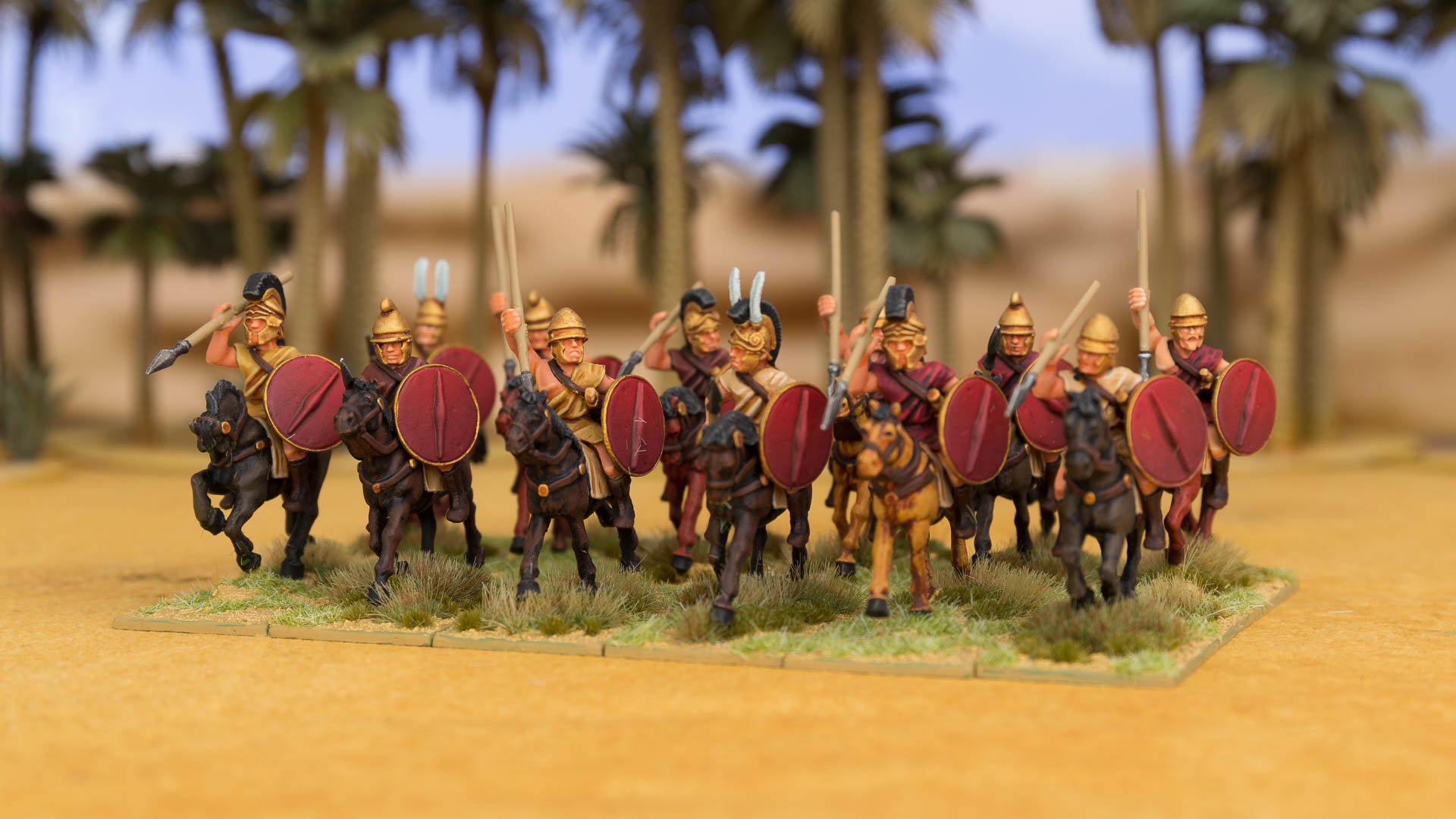
As for light troops the obvious first choice is to use thureophoroi. They could definitely perform this battlefield role, but it’s not that fun and you’ll probably have to paint a lot of them anyway so a little variation might be good. Some local variation can be found in Cretan archers or Libyan tribes. I chose to model some Nubians after seeing a colour plate in Stéphan Thions book “Le Soldat Lagide” based on the Palestrina mosaic, you can see this below and my interpretation.
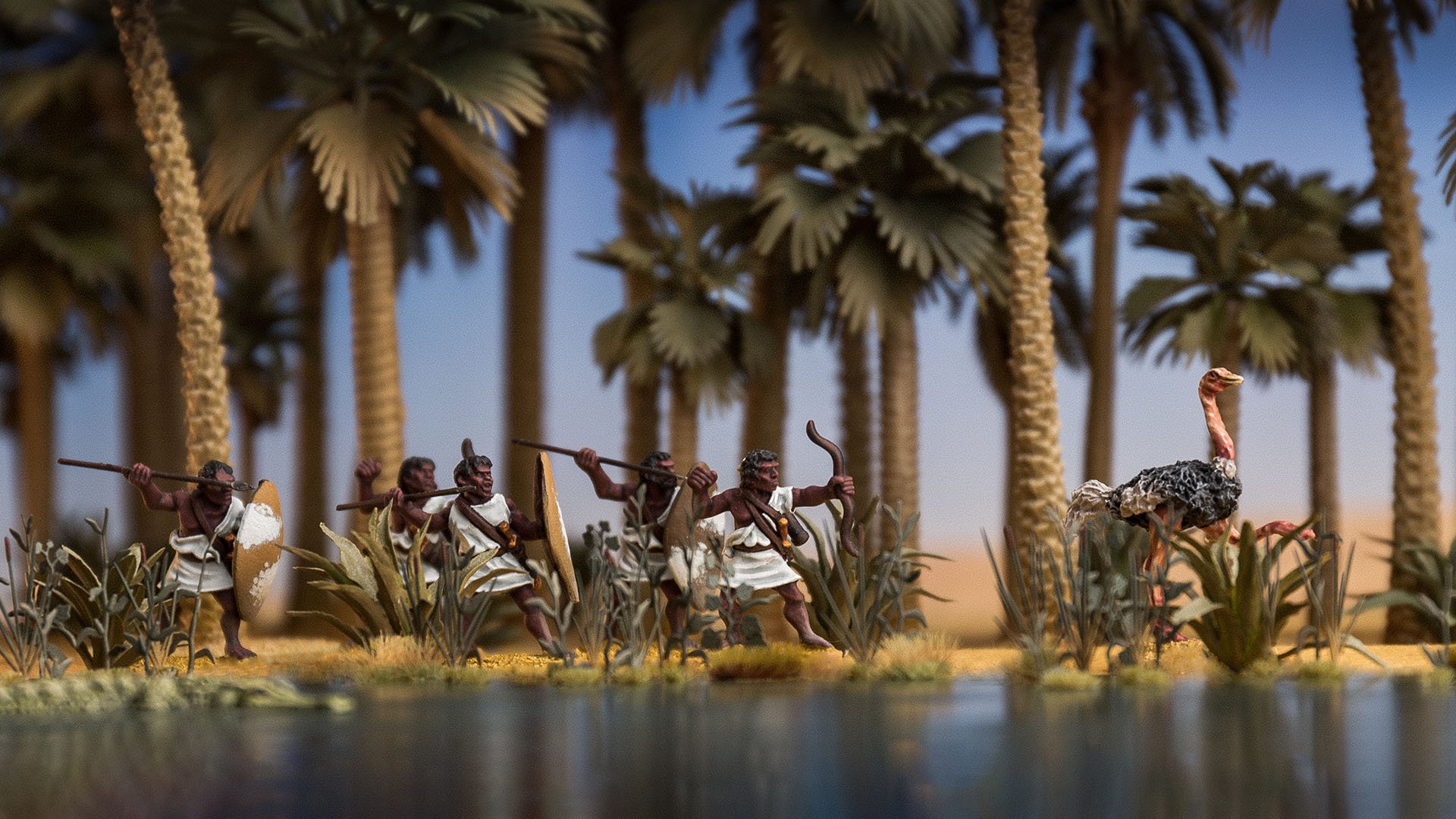
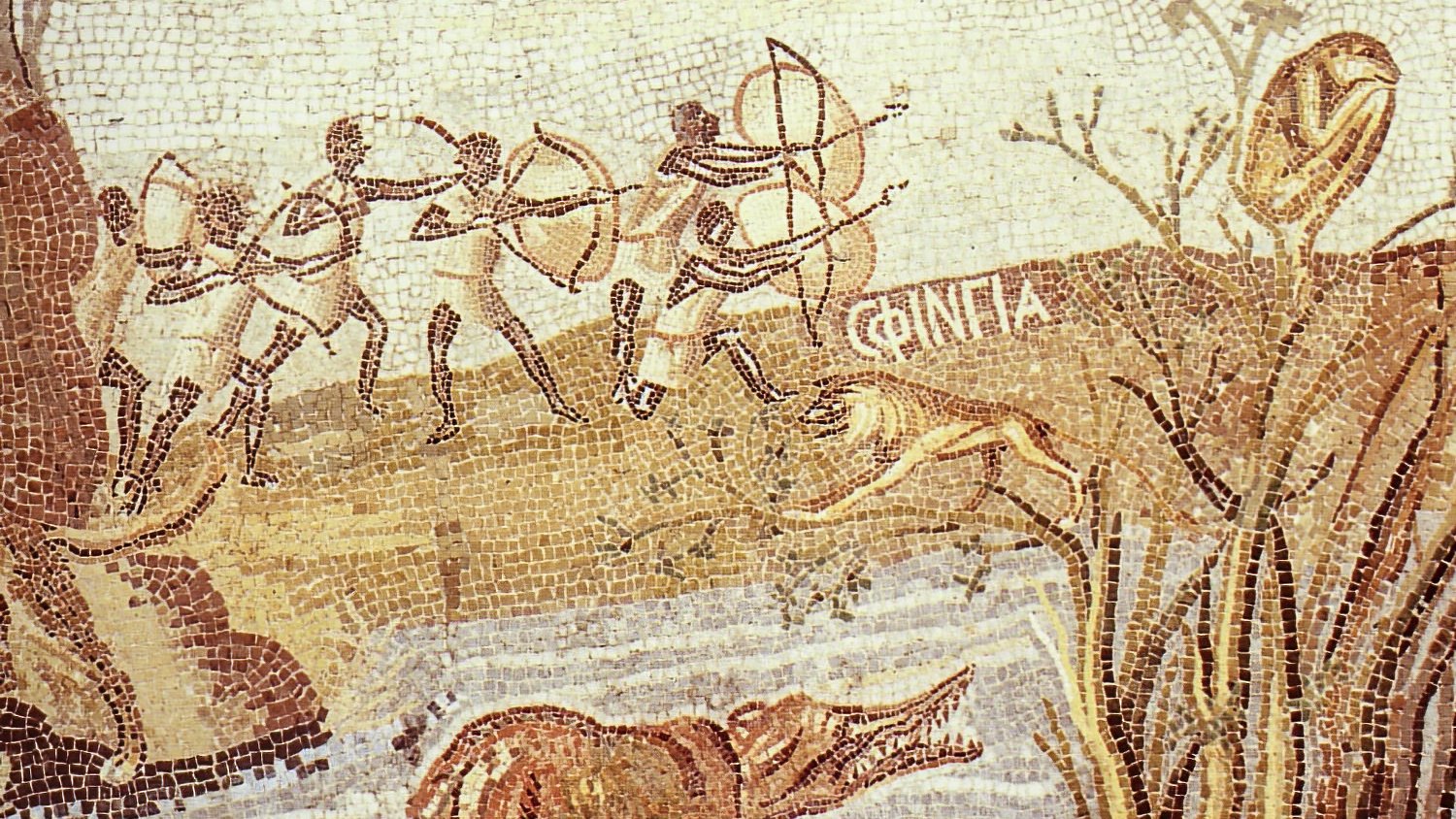
These are based on Wargames Foundry’s Greek or Macedonian archers and javelinmen. They were given a new shield and a suitable paint job and they look pretty close to the mosaic I think. I’m not sure how common Nubians were in the Ptolemaic army and the ones portrayed in the mosaic aren’t soldiers, they are hunters, but let’s have some artistic freedom since they make a great unit on the wargaming table.
One of the most fun parts of making a Ptolemaic army, at least for the siege of Alexandria, is to model the feared Alexandrian mob.
Some armed slaves on the left, from Wargames Foundry (one of them looks like a movie star!), and a mob on the right from Footsore Miniatures.
“When this tumult was appeased frequent disturbances took place on successive days from the gathering of the multitude, and many soldiers were killed in all parts of this town.”
Alexandria was infamous for its mob which quickly rose in anger to depose kings they didn’t like or crown pretenders to the throne they did like. There are quite a lot of ancient civilian miniatures available with the caveat that most of them are Romans which is a fact I think we can get away with. First we have the excellent range of mobs from Footsore Miniatures for their Gangs of Rome-game. They are sculpted by Paul Hicks and I think I own almost all of them. Then there’s Wargames Foundry’s ancient civilians which is a great complement, this range adds some more heavily armed types. You can split all of these into three different categories, civilian bystanders, rioteers and armed slaves. All very useful for games set in Alexandria.
Here are some photos of my Ptolemaic collection from the Gallery section.
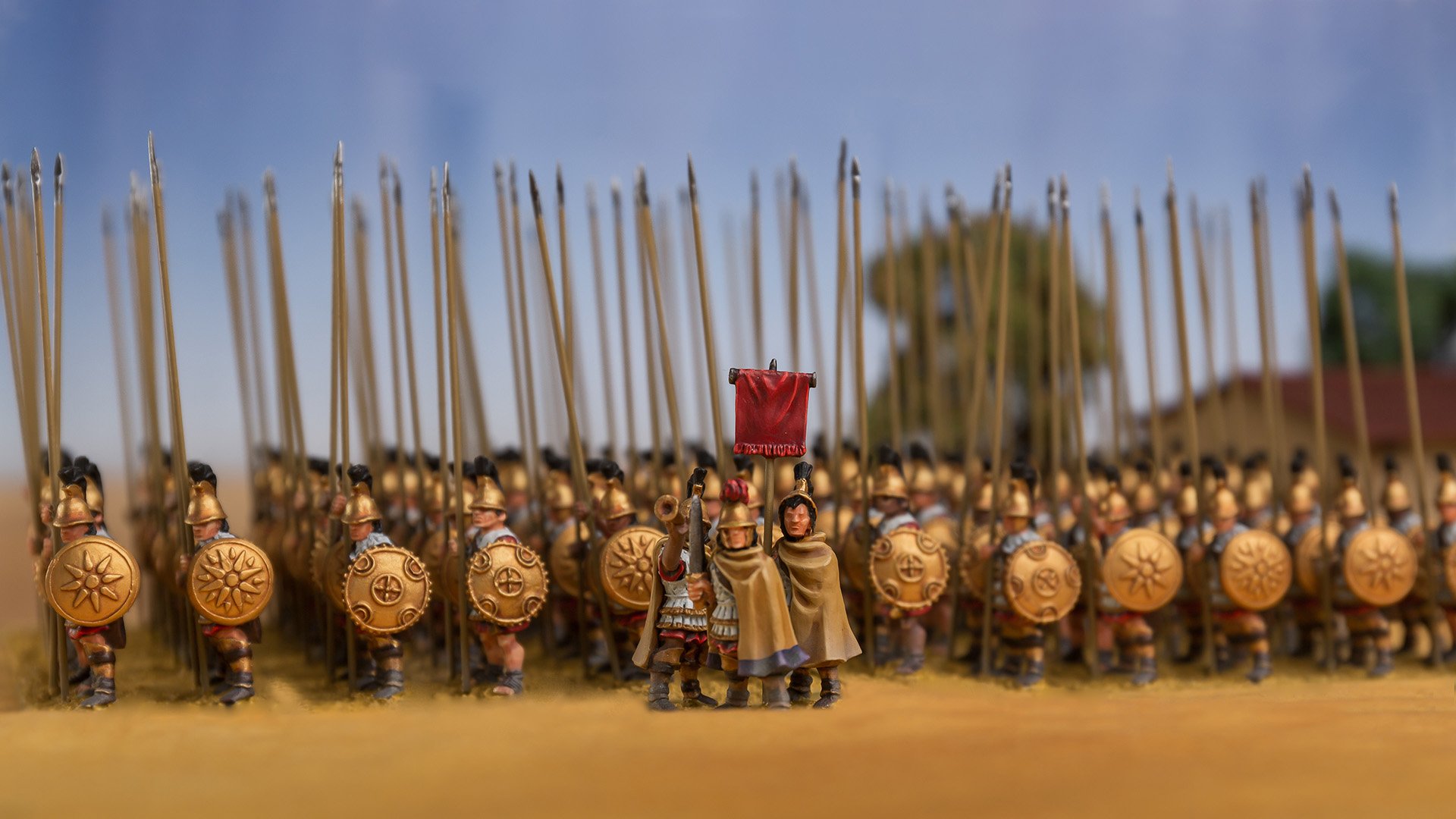
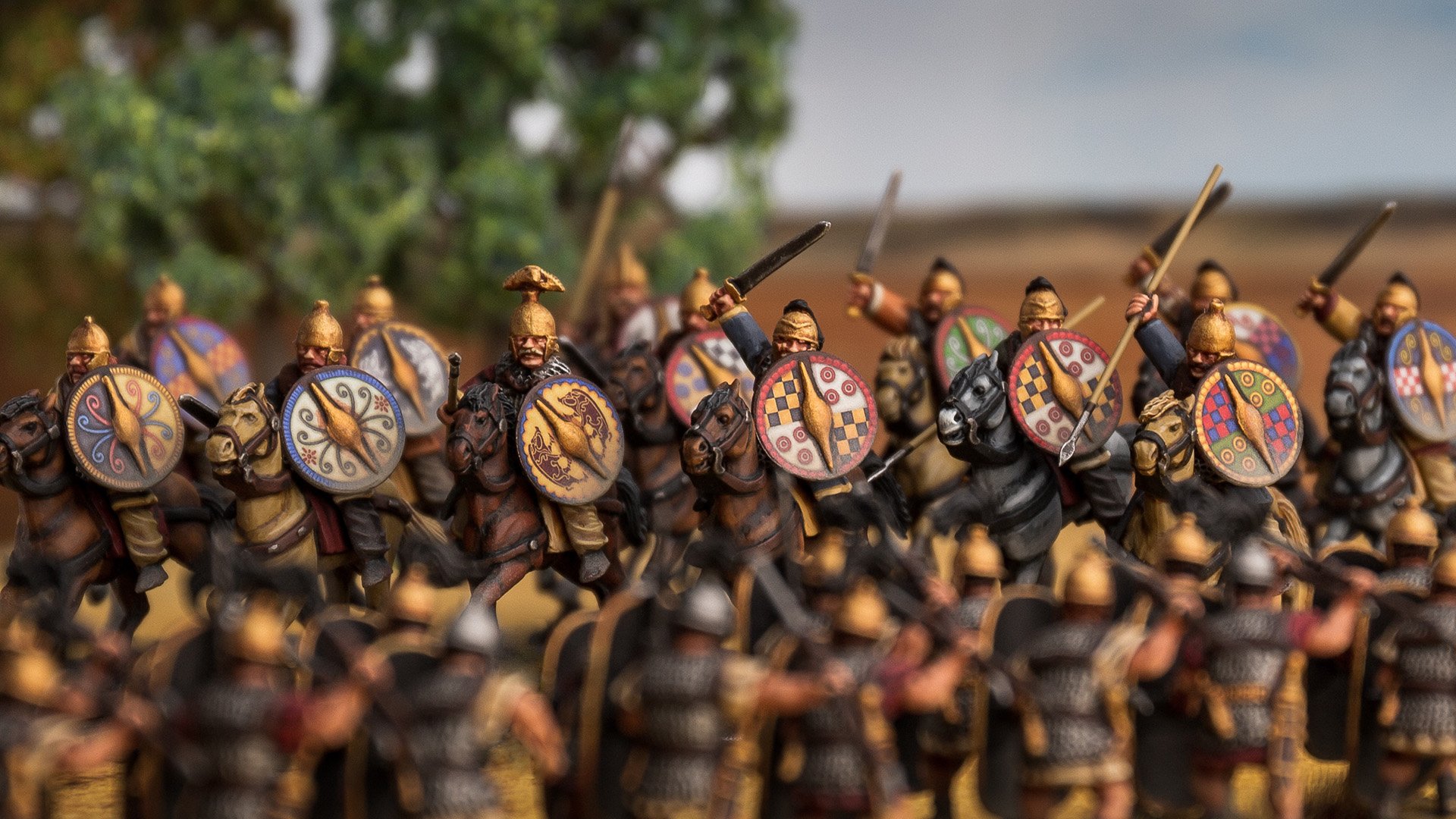

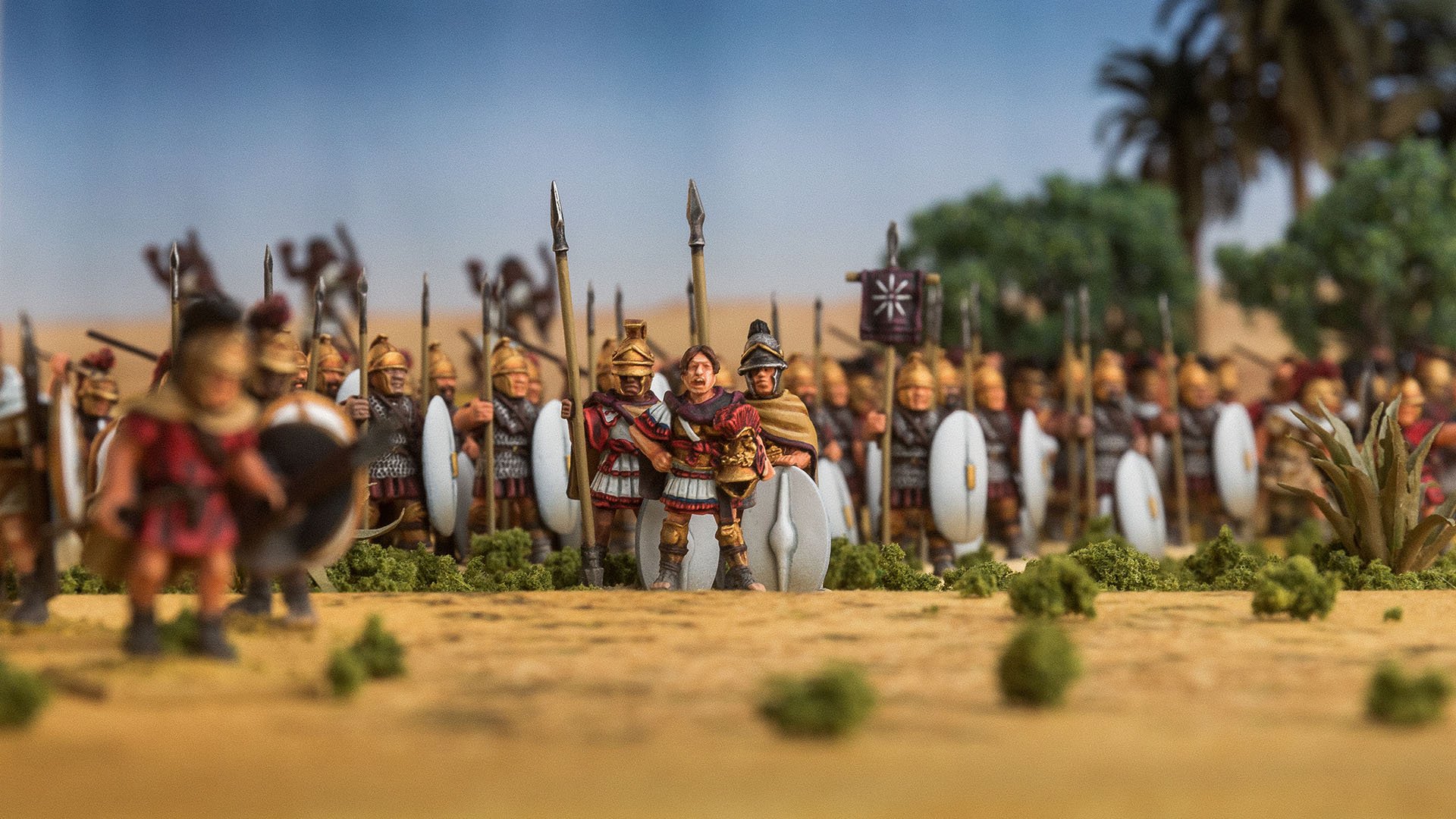
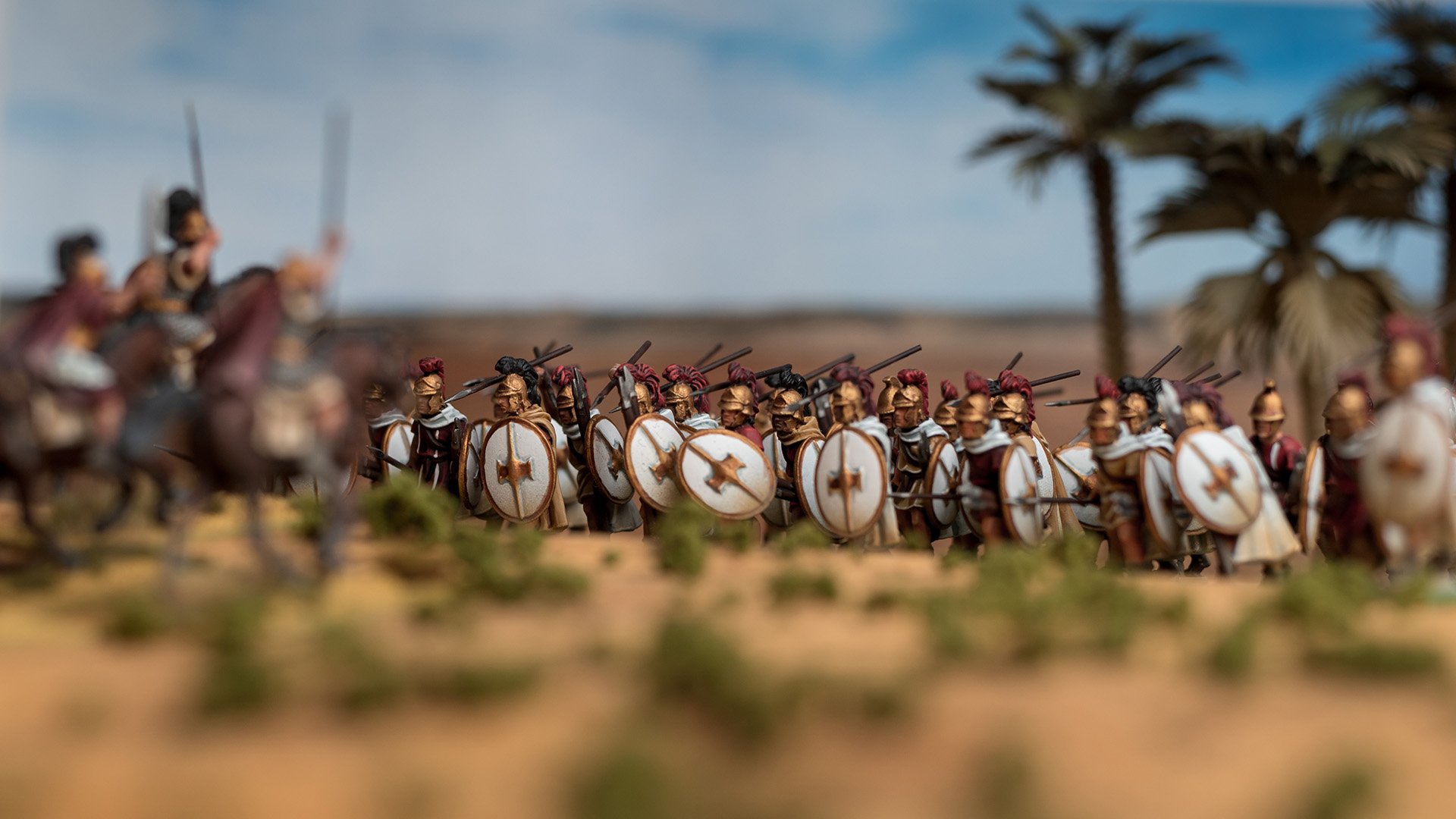

A note on sources
Unfortunately there is not a wealth of information on the late Ptolemaic army easily available. Duncan Head's ”Armies of the Macedonian and Punic Wars” is an obvious starting point. Nick Sekunda’s ”Seleucid and Ptolemaic reformed armies 168-145 BC. Volume 2: The Ptolemaic Army” is also a good source and has some nice colour plates by Angus McBride. Perhaps the easiest source to find is Stéphane Thion’s ”Le Soldat Lagide” which is a very nice and comprehensive book. Unfortunately, at least for me, it’s in French, but that’s nothing that the Google Translate app can’t help you with. There is also a book by Paul Johstono, ”The Army of Ptolemaic Egypt”, which I haven’t read as it deals with an earlier period, up to 204 BC. But according to the publisher, Pen and Sword Books, Johstono is working on a part two dealing with the latter half of the Ptolemaic kingdom. It’s estimated for release in November 2023 so that’s something I will keep an eye out for!




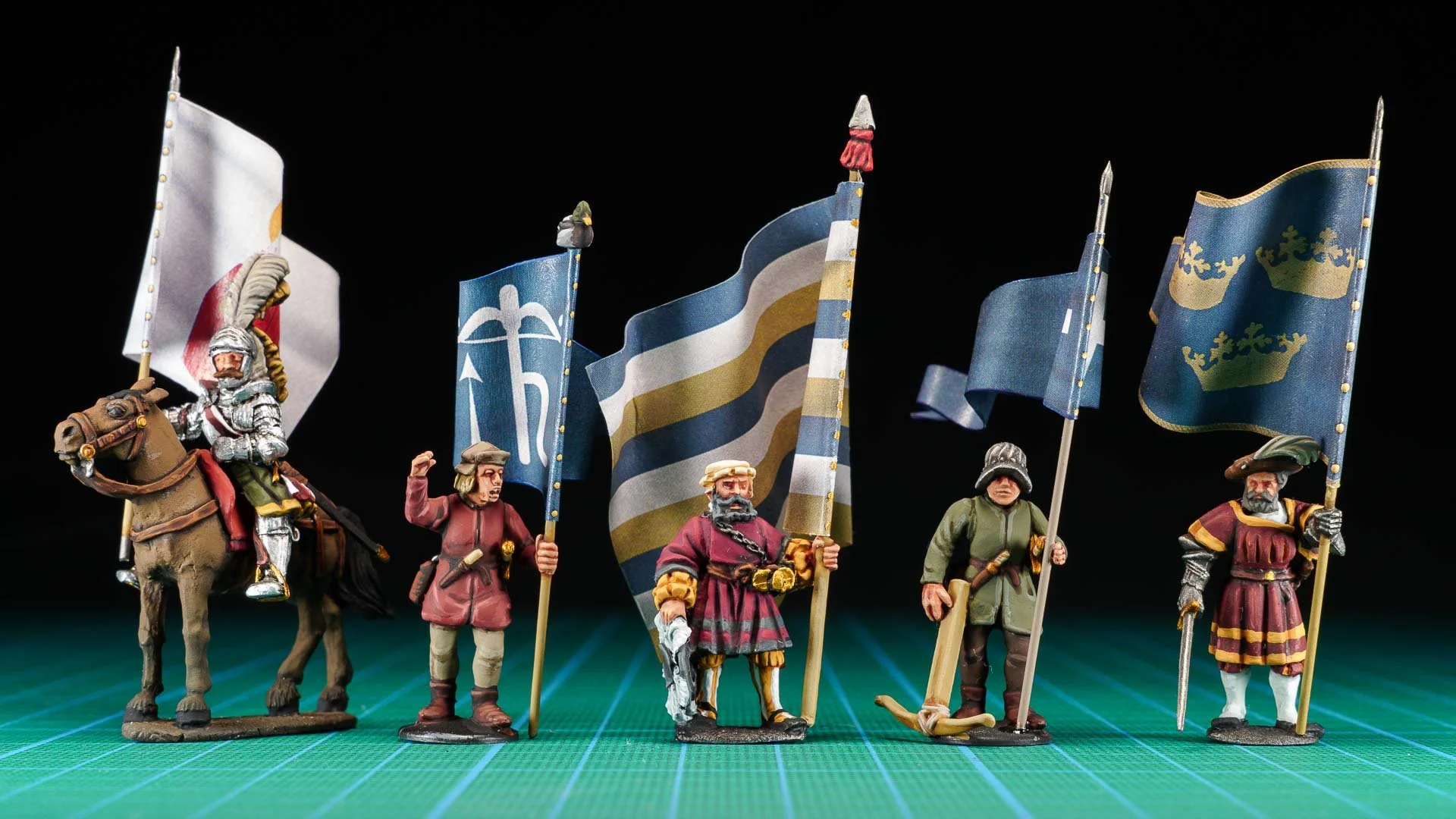
These Welsh are a joy to paint so here is a quick guide on how I painted mine trying to do the most of these beautiful sculpts.